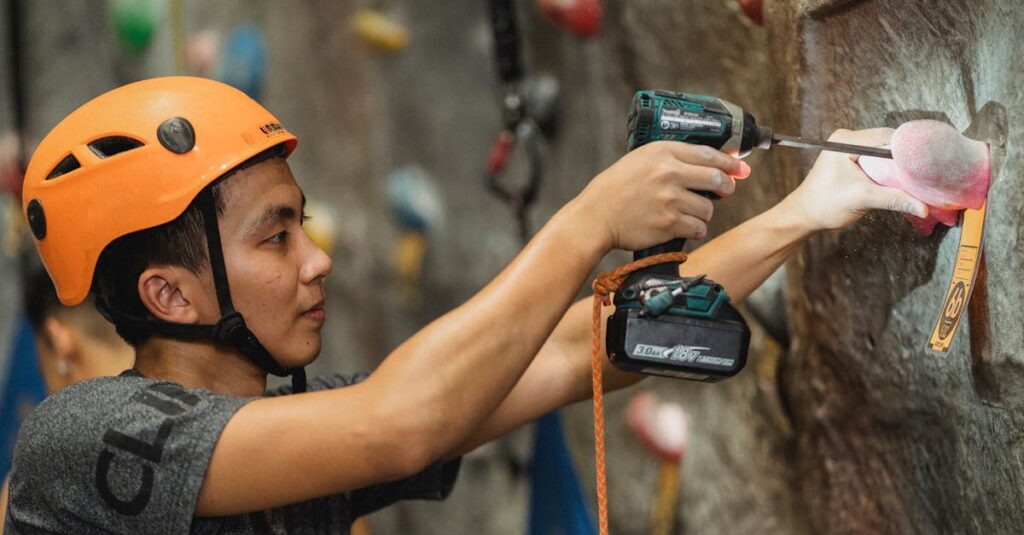In a world where couch-sitting champions are on the rise, sport and exercise science is the superhero we didn’t know we needed. This fascinating field dives deep into the nitty-gritty of how our bodies move, adapt, and occasionally protest when we attempt that last set of burpees. It’s not just about sweating it out in the gym; it’s about understanding the science behind every sprint, jump, and awkward lunge.
Sport and Exercise Science
Sport and exercise science examines human movement and performance through a scientific lens. This field integrates principles from physiology, biomechanics, psychology, and nutrition to enhance athletic performance. Key areas of study include the body’s responses to exercise, effective training methods, and injury prevention.
Physiology studies how the body reacts to physical activity. Researchers investigate cardiovascular function, muscle metabolism, and recovery processes after exertion. Understanding these physiological aspects guides athletes in optimizing their training schedules.
Biomechanics evaluates the mechanics of movement. Specialists analyze techniques in various sports to improve efficiency and reduce injury risk. This area can enhance an athlete’s performance by fine-tuning their movements based on data-driven insights.
Psychology plays a crucial role in motivation and mental resilience. Experts in this field explore how mindset affects training and competition. Enhanced mental strategies can lead to improved focus and performance under pressure.
Nutrition supports physical capabilities and recovery. Sport dietitians develop tailored nutrition plans that fuel performance and aid in muscle recovery. Proper nutrition significantly influences training outcomes and overall health.
Research studies in sport and exercise science contribute valuable insights for athletes, coaches, and fitness enthusiasts. Staying informed about ongoing research and trends helps individuals maximize their performance potential. By bridging science and practical application, this field fosters lasting improvements in health and athletic prowess.
Key Disciplines in Sport and Exercise Science

Sport and exercise science encompasses multiple disciplines that enhance understanding of human performance and health.
Exercise Physiology
Exercise physiology focuses on how the body responds and adapts to physical activity. This discipline studies factors like energy production and cardiovascular responses during exercise. It informs athletes about optimal training regimens based on their goals. Understanding metabolic processes helps athletes develop strategies for endurance and recovery. Researchers in this field analyze the effects of different training intensities and durations on performance outcomes. Knowledge from exercise physiology supports tailored workout plans, ensuring athletes maximize their physical potential.
Biomechanics
Biomechanics analyzes the mechanical aspects of movement. This discipline evaluates body movements through the lens of physics, improving technique and efficiency in various sports. By studying forces acting on the human body, biomechanics helps reduce injury risks. Athletes benefit from insights gained on movement patterns and joint mechanics. Professionals utilize motion analysis technology to refine skills and enhance performance. Implementing biomechanical principles allows for strategic adjustments that optimize training results.
Sports Psychology
Sports psychology examines the mental factors influencing athletic performance. This discipline addresses motivation, confidence, and stress management to enhance focus during competitions. Techniques such as visualization and mental rehearsal are employed to prepare athletes for challenges. Understanding the psychological impacts of competition helps athletes develop mental resilience. Additionally, this field studies team dynamics, which plays a critical role in group performance. Insights from sports psychology empower athletes and coaches to cultivate a strong competitive mindset.
Applied Sport and Exercise Science
Applied sport and exercise science focuses on utilizing scientific principles to improve physical performance and well-being. It explores critical areas such as performance enhancement and injury prevention.
Performance Enhancement
Performance enhancement strategies integrate insights from various disciplines. Training regimens leverage exercise physiology to fine-tune workouts for specific goals, including endurance or strength. Coaches utilize biomechanics to analyze athletes’ movements, pinpointing inefficiencies that could hinder performance. Additionally, sports psychology techniques bolster mental resilience, allowing athletes to maintain focus during competitions. Nutrition plays a key role, as tailored dietary plans optimize energy levels before and after training sessions. Implementing these strategies collectively enhances athletic capabilities, resulting in improved performance outcomes.
Injury Prevention and Rehabilitation
Injury prevention strategies employ biomechanics and exercise physiology principles. Athletes benefit from movement analysis that identifies potential injury risks, enabling adjustments in training techniques. Education about proper warm-up routines and recovery protocols supports physical health. Rehabilitation programs, guided by physiologists and trainers, focus on recovery from specific injuries. Customized exercises rebalance strength and flexibility, allowing gradual return to peak performance levels. Continuous monitoring of an athlete’s progress ensures effective recovery and minimizes the likelihood of recurrence. Prioritizing these methods creates safer environments for athletes, fostering long-term resilience and performance longevity.
Current Trends in Sport and Exercise Science
Advancements in technology shape how athletes train and recover. Wearable devices collect data on heart rate, movement patterns, and sleep quality. These devices help coaches and athletes make informed decisions about training loads and recovery strategies.
Another trend focuses on personalized training programs. Tailored regimens consider individual differences like genetics, fitness levels, and specific goals. This customization maximizes performance potential and minimizes injury risk for athletes of all levels.
The integration of mental health into training routines also gains traction. Sports psychology experts emphasize the significance of mental resilience, which includes techniques to enhance focus and motivation. Coaches increasingly incorporate mental skills training into their programs, recognizing its impact on overall performance.
Research into nutrition continues to evolve as well. Sports dietitians develop targeted nutrition plans that support individual needs. Recovery-focused diets, including macronutrient timing, play a crucial role in optimizing athletic performance and recovery.
Functional training methods, which emphasize core stability and movement efficiency, are becoming mainstream. Coaches and fitness professionals prioritize exercises that improve functional strength and athleticism while reducing injury risks. Programs that combine strength training with agility and balance exercises yield significant benefits.
Finally, group workouts and community-based fitness programs are rising in popularity. These initiatives foster camaraderie and support among participants, encouraging adherence to exercise routines. Such communal environments contribute to improved mental health and overall well-being.
These trends collectively reflect the ongoing innovations in sport and exercise science. They enhance athletic performance, promote health, and address the needs of an increasingly diverse population of athletes.
Future Directions in Sport and Exercise Science
Emerging technologies promise to reshape sport and exercise science significantly. Wearable devices provide athletes with real-time data on vital signs, movement patterns, and recovery metrics. These advancements allow for personalized training programs, tailoring techniques to individual athlete needs and genetics.
Another significant trend involves integrating psychology into training regimens. Mental resilience and focus are increasingly prioritized alongside physical performance. Research shows a strong correlation between psychological preparedness and athletic success, emphasizing the necessity of mental health in training.
Nutrition also sees innovation through functional approaches. Customized meal plans based on individual requirements support not only peak performance but recovery as well. Developments in sports dietetics reinforce this focus, ensuring athletes obtain the right nutrients in optimal quantities.
Collaboration across various disciplines in sport and exercise science emerges as a crucial focus. Physiology, biomechanics, psychology, and nutrition combine to promote comprehensive training methodologies. This interdisciplinary approach fosters a deeper understanding of performance and well-being.
Community engagement increasingly characterizes health and fitness initiatives. Group workouts and community programs not only encourage adherence to exercise but also enhance social support systems. Collective motivation plays a vital role in sustaining long-term participation in physical activities.
Finally, ongoing research initiatives will continue to enhance knowledge in areas like injury prevention and recovery optimization. Identifying risks through biomechanics and exercise physiology leads to proactive measures, ultimately creating safer environments for athletes. Prioritizing these avenues nurtures resilience and sustained performance improvement across diverse athletic populations.
Conclusion
Sport and exercise science serves as a vital component in enhancing overall health and athletic performance. By integrating knowledge from various disciplines, it not only addresses physical training but also emphasizes mental resilience and nutritional strategies. The advancements in technology and personalized approaches are paving the way for more effective training and injury prevention methods.
As the field continues to evolve, the focus on community engagement and interdisciplinary collaboration will play a significant role in promoting healthier lifestyles. This holistic approach ensures that individuals can achieve their fitness goals while minimizing risks and maximizing performance. Embracing the principles of sport and exercise science can lead to lasting benefits for athletes and fitness enthusiasts alike.



